Liquid nails for ceramic tile
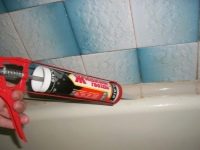
What is it.
Reading old instructions for laying ceramic tiles, you can see a mortar composition such as a mixture of casein glue and Portland cement. The result was very good in terms of strength and durability, but the process itself was accompanied by dustiness, a pungent smell of casein glue and heavy pollution of the room.
Then we used special tile adhesive for a long time, and now it is possible to glue ceramic and concrete surfaces quickly and accurately with liquid nails (LN).
Liquid nails - one of the varieties of adhesives that are used to connect the different parts in the construction work, including the lining of different surfaces. And the connections are very strong, as if the parts were fastened with nails.
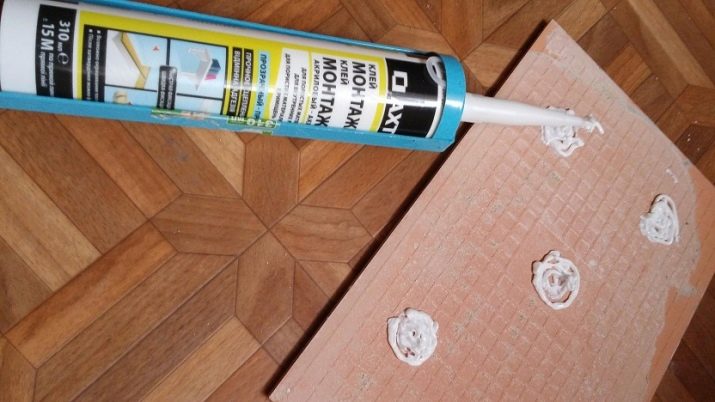
Types
Now use liquid nails mainly two types: water-emulsion acrylic and neoprene on organic solvents.
They are almost as strong as each other in terms of connection strength, but there are differences in characteristics and application possibilities.
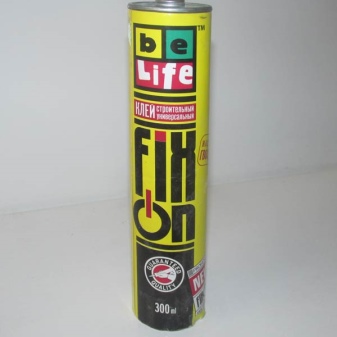
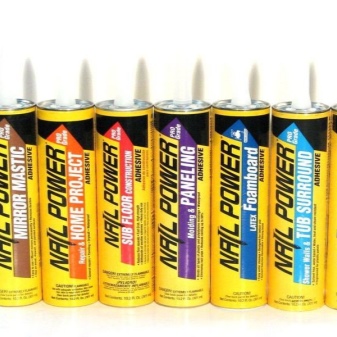
Acrylics are prepared in an aqueous solution, which means that they are practically safe. But their use is limited because of weak resistance to moisture. This type of liquid nails can be used in rather dry rooms. Large temperature fluctuations disintegrate the base of liquid nails. These types of adhesives more reliably hold connections to porous materials, including plastic.
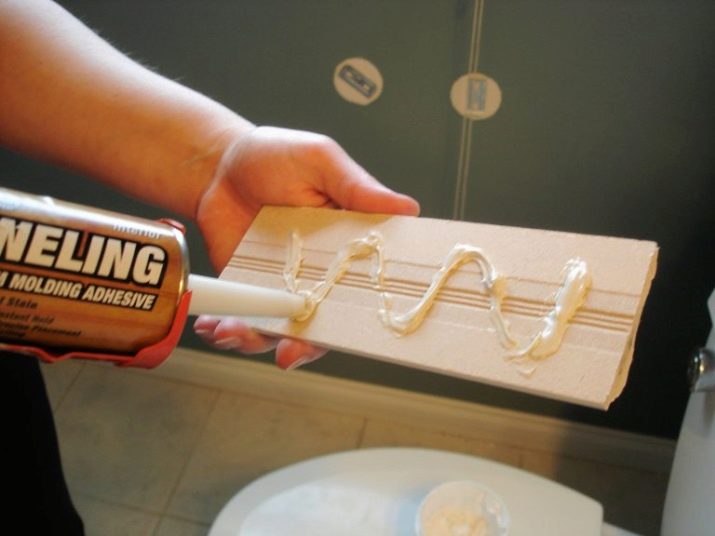
Solvent-based liquid nails retain their characteristics at all temperatures and humidity levels. Such adhesive has good resistance to fungi. The setting time is shorter compared to acrylics, and the connection to the surface is stronger. In terms of environmental safety, neoprene-based glue is much worse than acrylic glue, increased protection measures are required against the harmful effects of vapors that are released over several days.
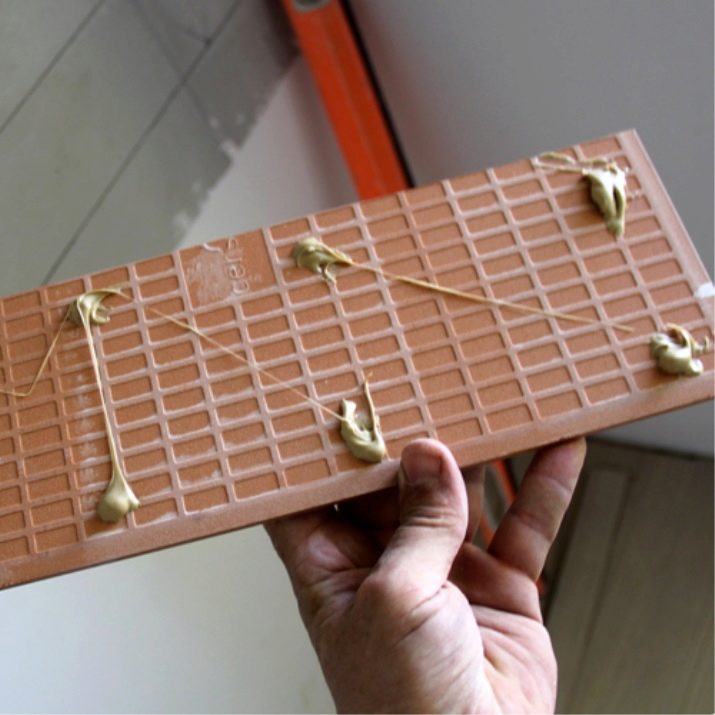
The strength of both types of liquid nails is much higher than that of PVC glue. They can firmly bond various construction parts together. You can glue ceramic tiles and other pieces of various materials to a tile base, to almost any non-smooth surface.
Selection Tips
Ceramic tiles are best laid using water-soluble Titan WB 50 or Solvent Free as liquid nails.
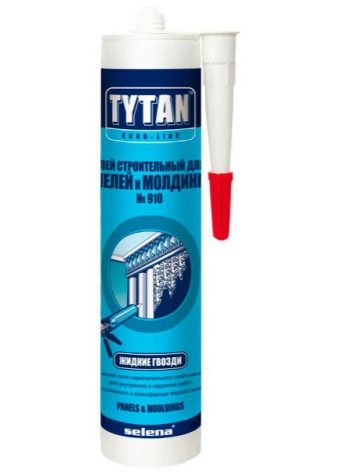
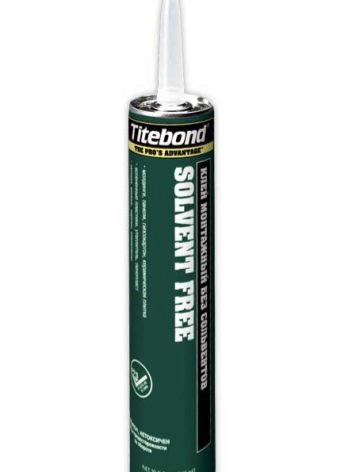
Nail Power or Teb Suraund - for finishing rooms like bathrooms with high moisture resistance.

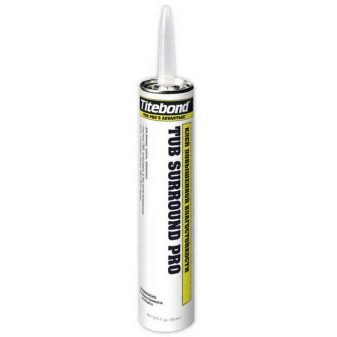
For solid tiles, Zigger 99, LN 901, Heavy Duty is preferred.
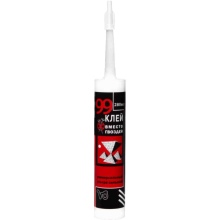
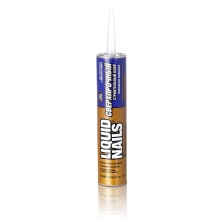

Titebond Multi-Purpos - solvent based. It has excellent adhesion to construction surfaces (brick, dry plaster, concrete). It is successfully used for gluing of surfaces of ceramic, plastic, wooden, foam plastic, metal, fiberboard, chipboard.
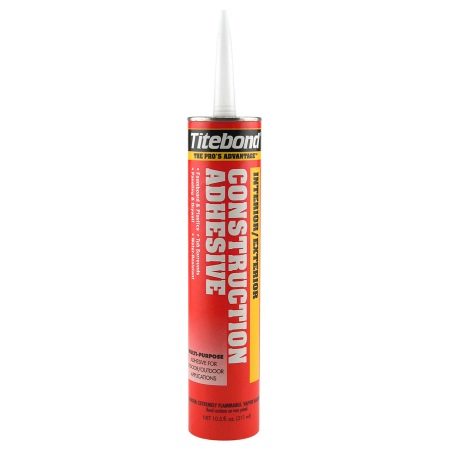
For works on laying ceramic tiles using liquid nails, it is necessary to pay attention to the main aspects in preparing and carrying out the work process:
- Strength in the connection of the tiles to the surface
- What surfaces are liquid nails designed for - vertical/horizontal/miscellaneous.
- Work interior, exterior, variable
- Curing time and final curing time
- Since such adhesives are not cheap, before buying the necessary amount of glue, you need to consult with experts and sellers - consultants on the choice of type and type of glue, get acquainted with the instructions for use.
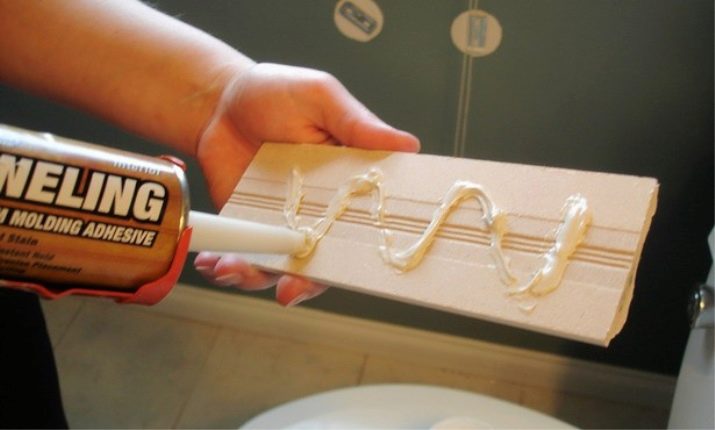
You can also conduct your own master class for yourself. Buy one or two samples, choose a possible variant of ceramic tiles and conduct tests
Follow a few recommendations:
- Find out how long it takes for the composition to set; it is indicated on the package (up to 40 minutes).
- The composition should not contain particles of chalk and calcium carbonate (reduces adhesion).
- The mixture should not contain acetone and toluene with an unpleasant odor and harmful effects on the body.
- For finishing walls with ceramics in places with high humidity (bathroom, kitchen), you can use some types of water-soluble liquid nails that are fast drying and resistant to stress and humidity (Solvent Free or Titan WB-50).
- To avoid damaging the mirror's amalgam, use non-corrosive liquid nails (Moment Mount, LN-930 or Zigger 93) to affix the mirror.
- For bathroom finishes, try using Tub Surround or Nail Power.
- It is important to know that all types of liquid nails cure within 12-24 hours.
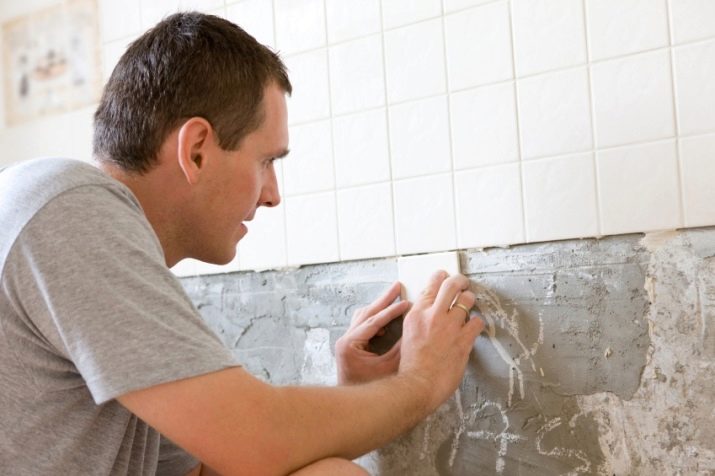
Laying
Methods of cladding.
If there is no need to do something unusual, it is better to choose horizontal laying. Tiles with right angles are laid horizontally to the floor, using a meter and 30-centimeter levels. If the design provides, use tiles and borders of different colors, transitional colors and tiles with patterns, all this will decorate any bathroom.
Often use a vertical method, for this will suit the laying of rectangular tiles. If the room has a low ceiling, this method will create the impression of adding to the ceiling. Here, too, there is an opportunity to experiment with the use of different colors and shades. When the combined method combines vertical and horizontal methods of laying. Both versions of tiles with right angles are used.
A checkerboard version of square tiles in a contrasting color. There are also lovers of diagonal and other intricate plots.
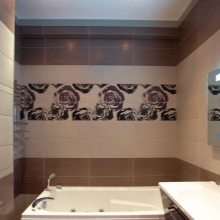
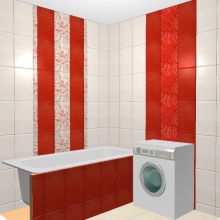
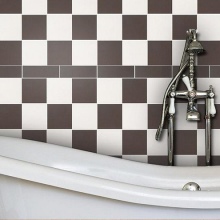
Stages
- Both tile surfaces must be dry, cleaned and degreased.
- Apply a snake of liquid nails to the tiles. On lightweight tiles, the adhesive can be applied in dots.
- Press the tile firmly against the wall and let it stand for a while.
- For preliminary curing of liquid nails requires up to 24 hours, for full - about a week.
- Make grouting of joints after a week.
- Do not use liquid nails for floor tiles.
See the video below for more details.
How do I remove excess glue?
Liquid nails after curing become very strong, to remove the excess glue will have to apply a lot of effort, that's why they have such a name.
If you can't remove these excesses right away, try a few ways to remove them:
Remove the excess with a soft, clean cloth. But this should be done while the composition has not hardened, when the liquid nails dry out, it is removed with cleaners (based on solvents that are part of the glue). It is necessary to apply the cleaner to the hardened areas of the glue, give time to soften, rinse and wipe these places with a clean rag.
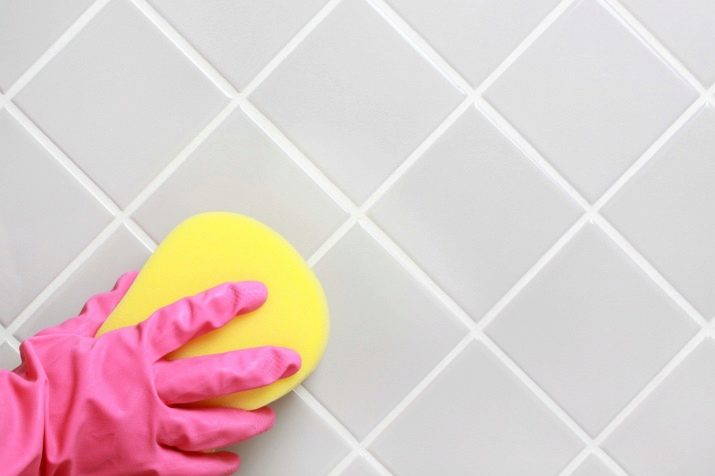
Another option is to use a scraper, but it will take a lot of effort and time. You should not use abrasive materials, there may be scratches that will spoil the whole look, it is better to use a source of heat to heat the glue; heat, using a construction hair dryer.
When the excess is heated to 60 degrees, it will soften and can easily be removed with a spatula.
Remember to take precautions - no flammable substances nearby (paint, solvents).
Use a trowel (scrape off any drips). Traces of adhesive can be dissolved with acetone. If on hands, remove glue with a tampon, using a tampon and petroleum jelly. Wash your hands thoroughly with warm water and laundry soap.
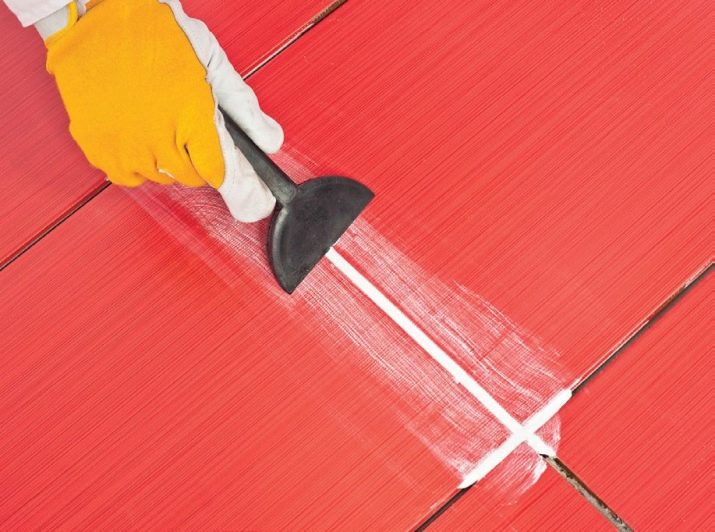
How long will it last?
If you choose the right adhesive and follow all the steps of working with tiles, you can be sure that the results of your work will please all members of the family for many years. To make the glue last longer, follow the following rules:
In case of accidental mistakes, do not allow the glue to harden, correct the situation faster
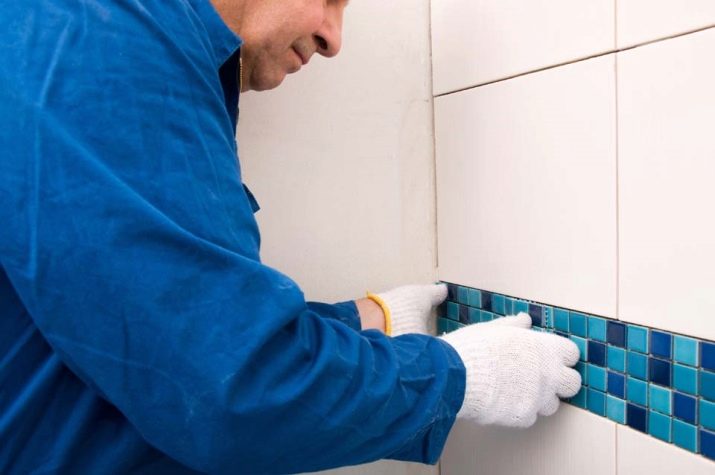
Maintain a normal temperature regime in the room where the tiles are laid. In this case, the connection of the surfaces is more reliable and more durable.
When storing the glue, do not overheat it, it can dry right in the can.
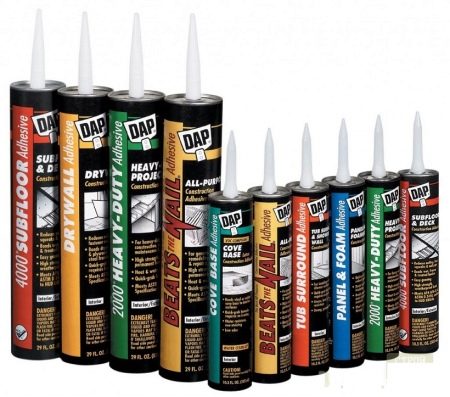
Tips
On the packaging there is always quite detailed information about the features of the application, the manufacturers, the terms and conditions of storage, the safety precautions when working with the product.
There are special and universal adhesives on sale. Universal adhesive is made up of neoprene.
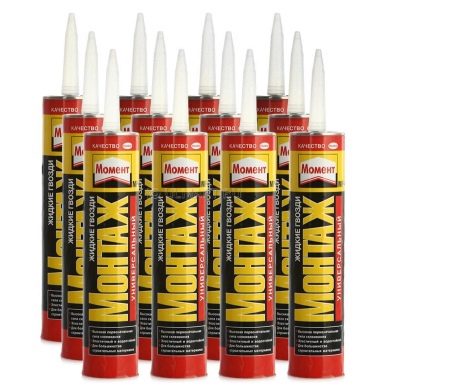
In the instructions for use, you should pay attention to the section of the adhesive reaction to the level of humidity, at which it retains its main properties. Store liquid nails in a dry place. Do not leave it outdoors and do not allow it to come into contact with water.




